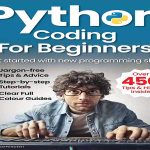- عنوان کتاب: Clinical Chemistry Principles,Techniques, and Correlations
- نویسنده: Michael L. Bishop
- حوزه: شیمی بالینی
- سال انتشار: 2023
- تعداد صفحه: 856
- زبان اصلی: انگلیسی
- نوع فایل: pdf
- حجم فایل: 34.7 مگابایت
وقایع با همهگیری جهانی، بار فوقالعادهای بر سیستم مراقبتهای بهداشتی ما وارد کرده است. در مواجهه با کمبود نیروی انسانی، PPE و کمبود تجهیزات تشخیصی، متخصصان مراقبتهای بهداشتی با تلاش، ارزیابی فرآیند حیاتی و تعهد فوقالعاده برای ارائه مراقبتهای باکیفیت از بیمار همراه با شفقت و همدلی قدم برداشتند. در ابتدا، اخبار شبانه به ارائه دستورالعمل های CDC، دستورات ماسک، تعطیلی مشاغل، محدودیت های سفر، معیارها، روندها، نرخ مثبت و آمار بستری شدن در بیمارستان و مرگ تبدیل شد. ماهها بعد، معیارها به اطلاعات مثبتتر مربوط میشوند – نتایج اولیه آزمایشهای بالینی واکسن، مجوزهای استفاده اضطراری، ارسال واکسن، و “تیراندازی به سلاح”. از طریق همه اینها، سیستم مراقبت های بهداشتی به دلیل تلاش های فردی و کار تیمی بین رشته ای تا حد امکان به طور موثر عمل کرد. متخصصان مراقبت های بهداشتی ارتباط خود را با یکدیگر و همچنین با بیمار و خانواده هایشان بهبود بخشیده اند. تلاش های مشترک بین رشته های مراقبت های بهداشتی در سراسر چشم انداز طیف مراقبت از بیمار در حال ظهور است. از آنجایی که ایده اولیه این کتاب درسی در اواخر دهه 1970 در جلسه ای از بخش بیوشیمی/آنالیز ادرار ASMT (اکنون ASCLS) مورد بحث قرار گرفت، تنها ثابت تغییر و تعهد هرگز تزلزل ناپذیر متخصصان آزمایشگاه بالینی بوده است. اکنون تقریباً 45 سال از آغاز این تلاش می گذرد، ویراستاران این امتیاز را داشته اند که ویرایش نهم را با تیم متنوع دیگری از متخصصان متخصص آزمایشگاه بالینی تکمیل کنند. در این عصر تمرکز بر معیارها، ویراستاران مایلند اطلاعات زیر را به اشتراک بگذارند. 401 مشارکت در 9 نسخه و مواد پشتیبانی کننده 115 برنامه آموزش علوم آزمایشگاهی بالینی، 83 آزمایشگاه بالینی، 28 شرکت تجهیزات پزشکی، 4 سازمان دولتی، و 3 انجمن حرفه ای به نمایندگی از 40 ایالت و قلمرو را نشان می دهد. صد و شصت و چهار مشارکتکننده، دانشمندان آزمایشگاه بالینی با درجههای پیشرفته بودند. این مشارکت کنندگان 289 فصل را با ذکر 12054 مرجع برای مجموع 5708 صفحه که شامل 2158 شکل و 691 مطالعه موردی است، تهیه کرده اند. با تمرکز جهانی امروز، نسخه های قبلی متن حداقل به شش زبان ترجمه شده است. طبق تعریف، یک حرفه فراخوانی است که نیازمند دانش تخصصی و آمادگی آکادمیک فشرده برای تعریف دامنه عمل و تولید ادبیات خاص خود است. حرفه علوم آزمایشگاهی بالینی در طول چهار و نیم دهه گذشته به طور قابل توجهی تکامل یافته است. شیمی بالینی همچنان یکی از سریع ترین حوزه های پزشکی آزمایشگاهی است که در حال پیشرفت است. فنآوریهای جدید و تکنیکهای تحلیلی معرفی شدهاند که تأثیر چشمگیری بر روی عمل شیمی بالینی و پزشکی آزمایشگاهی دارد. علاوه بر این، خود سیستم مراقبت های بهداشتی به سرعت در حال تغییر است. تاکید روزافزون بر بهبود کیفیت مراقبت از بیمار، پزشکی فردی، نتایج بیمار، مسئولیت مالی و مدیریت کیفیت جامع وجود دارد. اکنون، بیش از هر زمان دیگری، آزمایشگاههای بالینی باید به ارتباط بیماری، تفسیر نتایج، حل مسئله، تضمین کیفیت و مقرونبهصرفه بودن توجه داشته باشند. متخصصان آزمایشگاه نه تنها باید نحوه آزمایشات را بدانند، بلکه مهمتر از آن باید بتوانند چه چیزی، چرا و چه زمانی را به بیمار و تیم مراقبت های بهداشتی اطلاع دهند. ویراستاران شیمی بالینی: اصول، تکنیک ها و همبستگی ها، نسخه نهم را طوری طراحی کرده اند که منبع ارزشمندتری برای دانشجویان و پزشکان باشد. ویرایش نهم شیمی بالینی: اصول، تکنیکها و همبستگیها جامع، بهروز، و به راحتی برای دانشجویان در تمام سطوح ورودی قابل درک است. همچنین در نظر گرفته شده است که یک منبع عملا سازماندهی شده هم برای مربیان و هم برای پزشکان باشد. ویراستاران سعی کرده اند خوانایی کتاب را حفظ کنند و محتوای آن را بیشتر بهبود بخشند، در حالی که محتوا را مجدداً مرتب می کنند و روی داربست های ارائه شده توسط برنامه درسی سطح ورودی ASCLS MLT و MLS و دستورالعمل های ASCP BOC تمرکز می کنند. از آنجایی که آزمایشگاههای بالینی از مهارتهای تفسیری و تحلیلی خود در تمرین شیمی بالینی استفاده میکنند، تلاش شده است تا تعادل مناسبی بین اصول، تکنیکهای تحلیلی و همبستگی نتایج با وضعیتهای بیماری حفظ شود. در این نسخه، ویراستاران ویژگیهایی را در پاسخ به درخواستهای خوانندگان، دانشآموزان، مربیان و پزشکان ما حفظ کردهاند. مواد جانبی به روز شده و گسترش یافته است. در حال حاضر فصلها شامل مطالعات موردی کنونی هستند که بیشتر با آن مواجه میشویم که بر اساس ابتکار PICOT پرستاری در سبکی ساختاریافته و آشکار مدلسازی شدهاند. برای ارائه یک مطالعه کامل و به روز در مورد شیمی بالینی، تمام فصل ها توسط متخصصانی که به طور روزانه شیمی بالینی و پزشکی آزمایشگاهی را انجام می دهند، به روز شده و بررسی شده است.
The events with the worldwide pandemic have placed an extraordinary burden on our healthcare system. Facing staffing, PPE, and diagnostic supply shortages, healthcare professionals stepped up with effort, critical process evaluation, and extraordinary dedication to provide quality patient care with compassion and empathy. Initially, the nightly news became a presentation of CDC guidelines, mask mandates, business shutdowns, travel restrictions, metrics, trends, positivity rates, and hospitalization and death statistics. Months later, the metrics related to more positive information—initial results of vaccine clinical trials, emergency use authorizations, vaccine shipments, and “shots in arms.” Through it all, the healthcare system functioned as effectively as possible due to individual efforts and interdisciplinary teamwork. Healthcare professionals have improved communication with each other, as well as with the patient and their families. Collaborative efforts between healthcare disciplines are emerging across the patient care spectrum landscape. Since the initial idea for this textbook was discussed in a meeting of the Biochemistry/Urinalysis section of ASMT (now ASCLS) in the late 1970s, the only constant has been change and the never wavering commitment of the clinical laboratory professionals. Now almost 45 years since the initiation of this effort, the editors have had the privilege of completing the ninth edition with another diverse team of dedicated clinical laboratory professionals. In this era of focusing on metrics, the editors would like to share the following information. The 401 contributions in the 9 editions and supporting material represent 115 clinical laboratory science education programs, 83 clinical laboratories, 28 medical device companies, 4 government agencies, and 3 professional societies representing 40 states and territories. One hundred and sixty-four contributors were clinical laboratory scientists with advanced degrees. These contributors have produced 289 chapters citing 12,054 references for a total of 5,708 pages that included 2,158 figures and 691 case studies. With today’s global focus, the previous editions of the text have been translated into at least six languages. By definition, a profession is a calling requiring specialized knowledge and intensive academic preparation to define its scope of practice and produce its own literature. The clinical laboratory science profession has evolved significantly over these past four-and-a-half decades. Clinical chemistry continues to be one of the most rapidly advancing areas of laboratory medicine. New technologies and analytical techniques have been introduced, with a dramatic impact on the practice of clinical chemistry and laboratory medicine. In addition, the healthcare system itself is rapidly changing. There is ever-increasing emphasis on improving the quality of patient care, individualized medicine, patient outcomes, financial responsibility, and total quality management. Now, more than ever, clinical laboratorians need to be concerned with disease correlations, result interpretations, problem solving, quality assurance, and cost-effectiveness. Laboratory professionals need to know not only the how of tests but more importantly be able to communicate the what, why, and when to the patient and the healthcare team. The editors of Clinical Chemistry: Principles, Techniques, and Correlations have designed the ninth edition to be an even more valuable resource to both students and practitioners. The ninth edition of Clinical Chemistry: Principles, Techniques, and Correlations is comprehensive, up-todate, and easy to understand for students at all entry levels. It is also intended to be a practically organized resource for both instructors and practitioners. The editors have tried to maintain the book’s readability and further improve its content while rearranging content and focusing on the scaffolding provided by the ASCLS MLT and MLS Entry Level Curriculum and the ASCP BOC guidelines. Because clinical laboratorians use their interpretative and analytic skills in the practice of clinical chemistry, an effort has been made to maintain an appropriate balance between analytic principles, techniques, and the correlation of results with disease states. In this edition, the editors have maintained features in response to requests from our readers, students, instructors, and practitioners. Ancillary materials have been updated and expanded. Chapters now include current, more frequently encountered case studies modelled after the nursing PICOT initiative in a structured, unfolding style. To provide a thorough, up-to-date study of clinical chemistry, all chapters have been updated and reviewed by professionals who practice clinical chemistry and laboratory medicine on a daily basis.
این کتاب را میتوانید بصورت رایگان از لینک زیر دانلود نمایید.
Download: Clinical Chemistry Principles,Techniques, and Correlations



































نظرات کاربران